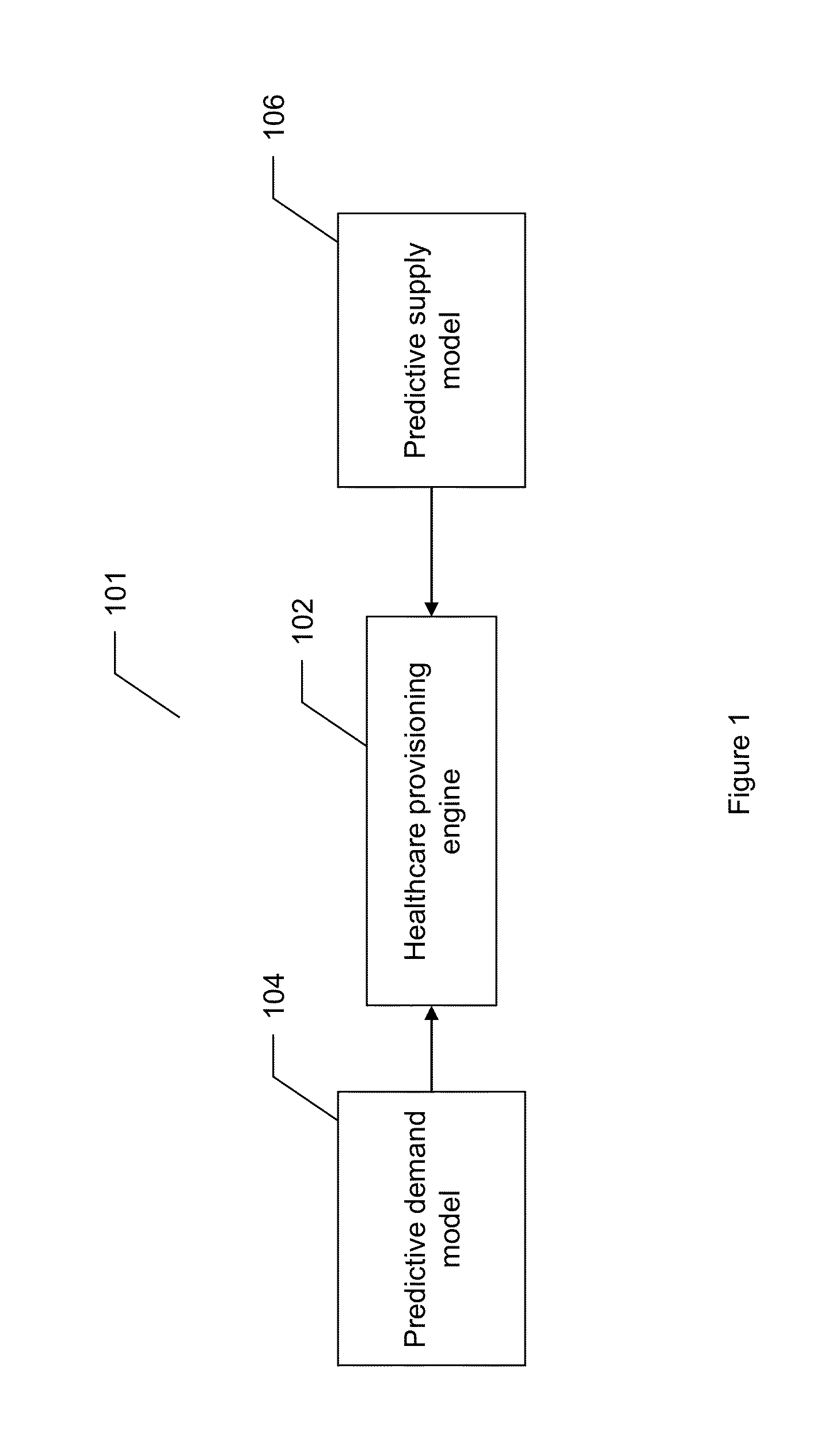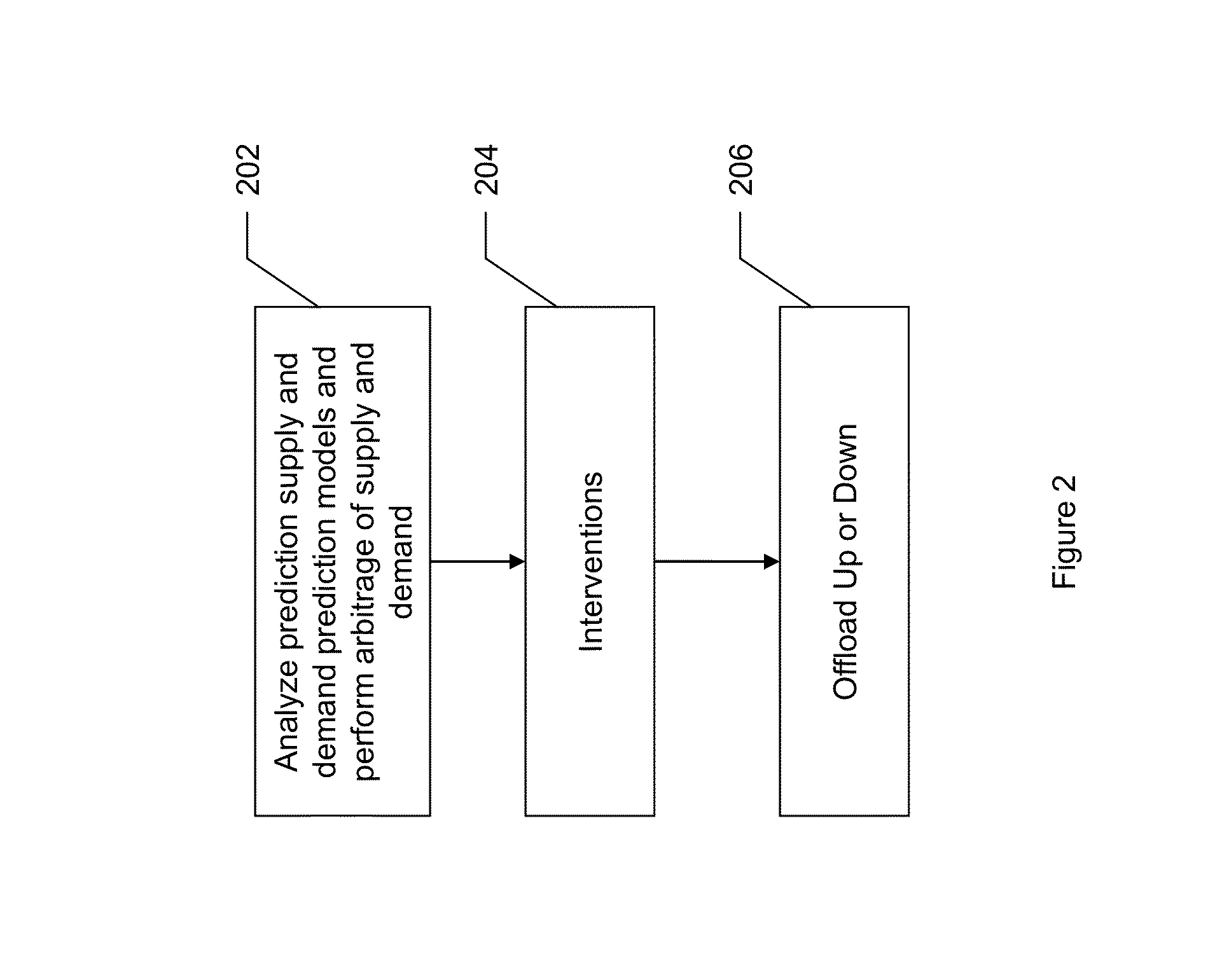Healthcare has become a central issue today.
Despite increased access to healthcare, patients often face long waits and must endure healthcare providers not performing optimally.
These waits and substantial performance issues can often be traced to poorly managed healthcare systems.
The poor management is due, in large part, to lack of tools to efficiently allocate healthcare resources, such as doctors, nurses, equipment, and rooms to patients requiring these services.
As a result, conventional healthcare provision is often highly inefficient.
This inefficiency can have devastating results.
Not only does the inefficiency result in substantially higher healthcare costs, but patient condition can worsen due to the inefficiencies, even to the point of death.
For example,
limited capacity can manifest itself as a result of limited knowledge.
However,
limited capacity is more often the result of the healthcare provider becoming overwhelmed by case load.
Other factors also affect healthcare costs and provider efficiency.
For example, length of stay (“LOS”) tends to have a significant
impact of healthcare cost and efficiency.
In addition to LOS, the number of diagnoses for a particular patient has an effect on healthcare costs.
For example, a patient diagnosed with congestive
heart failure (“CHF”) has an expected cost.
However that cost will likely rise in an exponential manner if there are additional diagnoses, for example, pneumonia.
However, the tasks themselves may also be “at risk” due to crucial issues, such as limited healthcare supply to perform the at risk task(s).
When a tipping point is reached, provision of healthcare services can be compromised and patient safety can be at risk.
For example, tasks required to care for a particular patient may not be performed, or may not be performed adequately.
The consequences of not performing such at risk tasks can be catastrophic in healthcare situations.
However, if a caregiver has done well “many” times in the past, but seems to have problem points, especially lately, then
overlay the caregivers load information onto those cases.
If load was high at same times tasks were poor, then likely culprit was cognitive overload, and thus less need for training and more need for support during overload periods for this task, since this task is at risk during this clinician's overload (if load is low, then may be other
distraction or hidden load).
If the demand is not met within the
time frame, significant consequences, including death, can occur.
When a tipping point occurs, the harm of a healthcare provider providing additional treatment outweighs the benefit of providing that treatment.
Typically, the healthcare provider does not forget how to treat the patient in general, but rather his or her
workload reached the tipping point so that his or her performance suffered as a result as specific tasks that could be essential are at greater risk of being forgotten, or also that thinking capacity required to solve problems (that can't be found in the usual checklists and clinical order sets don't apply sufficiently to the patient the caregiver is treating) is so diminished that the caregiver is not able to solve the problem nearly as well as they could if they had not crossed their tipping point.
The use of specialized task forces is most often most effective due to the complex nature of healthcare tasks and the reality of caregivers getting quickly overwhelmed and bogged down not only the more complex the tasks become, but also the more unfamiliar they are with the tasks or processes.
As described above, it is often the case that a particular
disease or patient will have a number of diagnoses associated therewith and, as a result, increased costs.
This is because healthcare costs tend not to be linear with respect to the number of diagnoses, but rather non-linear, such as exponential, since multiple
organ system failures require so much more time, effort, and expertise to avoid mortality.
Thus, the sicker and more complex the patient the greater the cost in a non-linear measure.
That is, the healthcare provider encountered an issue that could not be solved by a simple
checklist of procedures.
If that person who is normally best at a particular task has reached a tipping point, as previously described, their performance suffers substantially.
Whether the person is tired or has lost concentration, as a result of reaching the tipping point, that person may no longer be the best person for the task.
One example to consider is the highly recognized or popular doctors that have high volumes of patients, but poorer outcomes in terms of key quality
metrics than their less busy peers.
That is, because the length of stay for the healthcare provider is longer than expected, this indicates that the healthcare provider is not performing optimally because he or she is not able to
discharge patients when expected.
This indicates that the cases are more complex for some reason, for example, additional diagnoses and inefficient handling thereof that are contributing to the longer than expected stay.
Thus, while it is likely that the healthcare provider is capable of performing adequately if not overstressed, the increasing AMLOS indicates that the healthcare provider has become overwhelmed, either because of additional diagnoses outside of his or her
specialty or that a number of patients have had multiple comorbid conditions and / or complications at or near the same time.
The more complex, the more likely the healthcare provider will be to be preoccupied with that patient, and, as a result of this
cognitive load to ensure the patient survives, the likelihood of not performing other tasks increases as the tipping point is reached and tasks are either forgotten that were alerted or reminded along the way, or experience stored deep in memories are not remembered fast enough due to limited cognitive capacity constraining creative problem solving for this caregiver's patients.
Further, overall complexity estimated in this manner is an indicator of quality problems that that can be used to extrapolate other quality problems (including complications, unexpected mortality, core measure performance, etc.).
As a result, predicting healthcare supply based solely on complexity may lead to false positives (predicting a problem when there is no problem) and false negatives (not predicting a problem when there is a problem).
False positives may result in unnecessarily burdening healthcare providers to perform services that are not required because there is no problem.
False negatives can result in serious cost overruns or detriment to patient safety where services are not provided, though required.
Based on the healthcare resource usage estimate and required tasks, certain tasks may be considered at risk.
These overloads and consequent
TAR are also at least bottlenecks in
workflow—slowing things down as they also lead to more errors.
The recommendation will result in offloading up or down.
However, in “trading down” to increase supply in this manner requires reducing the risk of failure (which would negatively affect quality outcomes, costs, or both) of the configured supply.
This overwhelming task load reduces healthcare provider 1702's ability to treat each patient effectively.
For example, healthcare provider 1702 will have very limited time to apply creative problem solving to
handle patients present issues that cannot be treated by adherence to IHBP, or that have some other emergency that requires a unique solution at a given time.
In addition, due to the overwhelming task load, healthcare provider 1702 will likely forget to perform certain tasks, putting adherence to IHBP at risk.
Further, healthcare provider 1702 will have limited time to discuss the patient after care.
As a result, healthcare provider 1702 will experience
increased stress and reduced effectiveness, which not only puts a strain on healthcare facility resources, but also increased the likelihood of negative patient outcomes.
In this way, embodiments make the strange familiar, and add context, helping retention and subsequent execution and reducing perceived complexity of CTPs, and thus reducing the performance-degrading multitasking.
 Login to View More
Login to View More  Login to View More
Login to View More 


